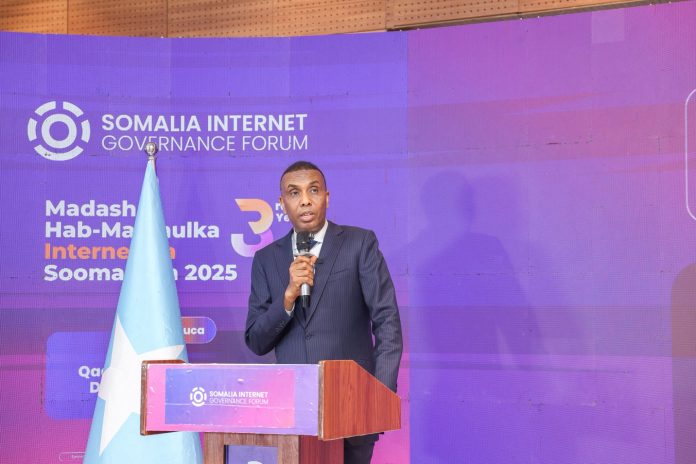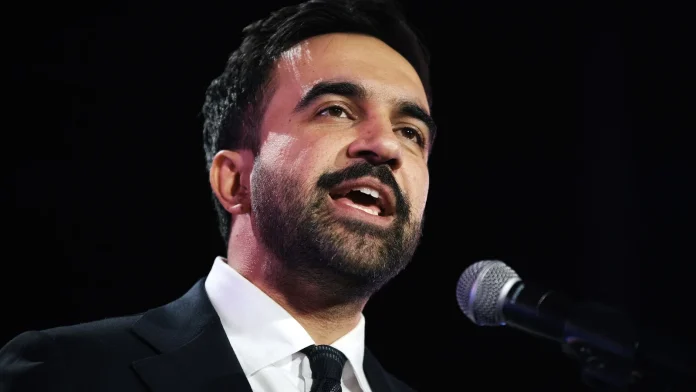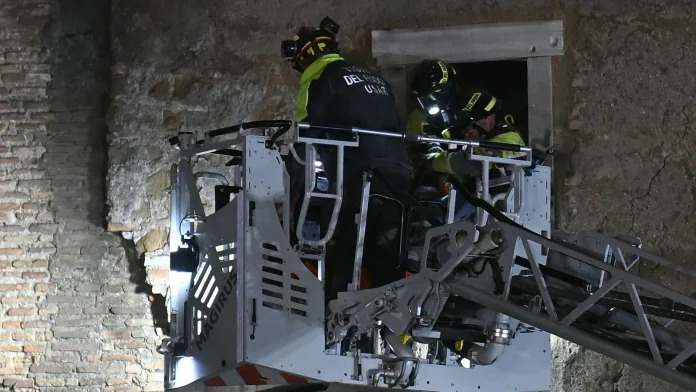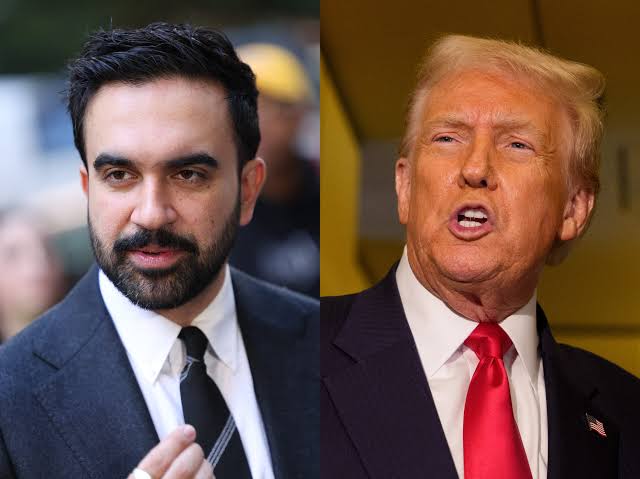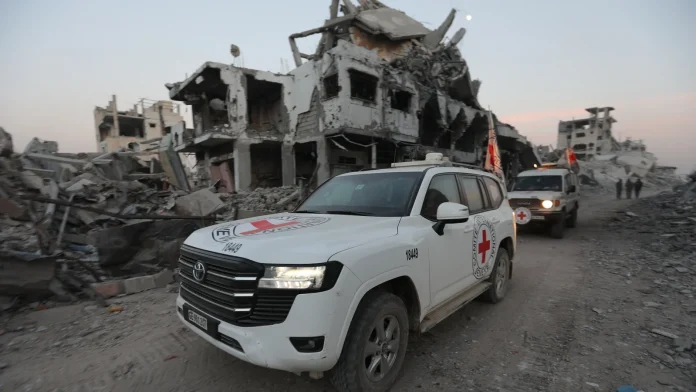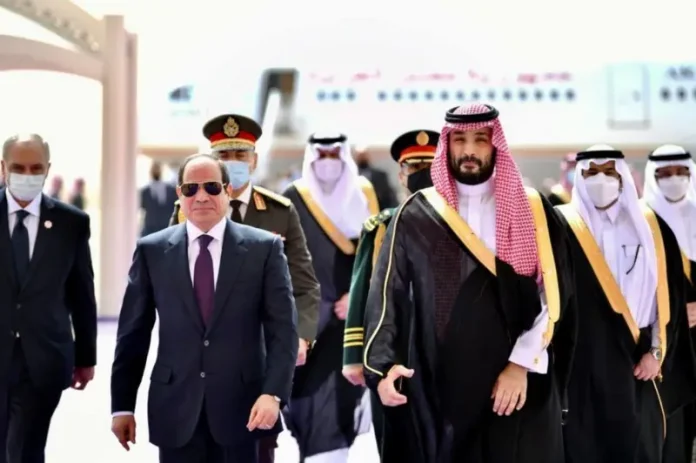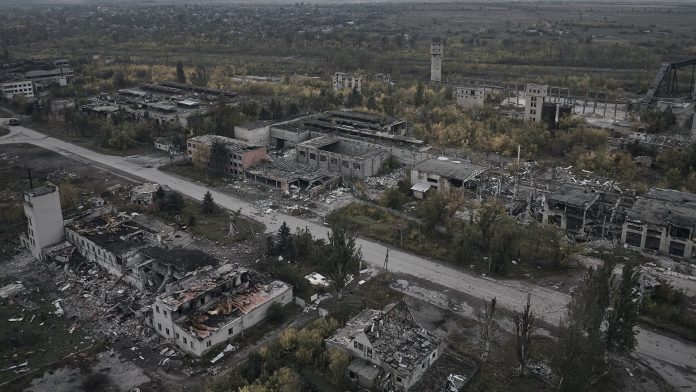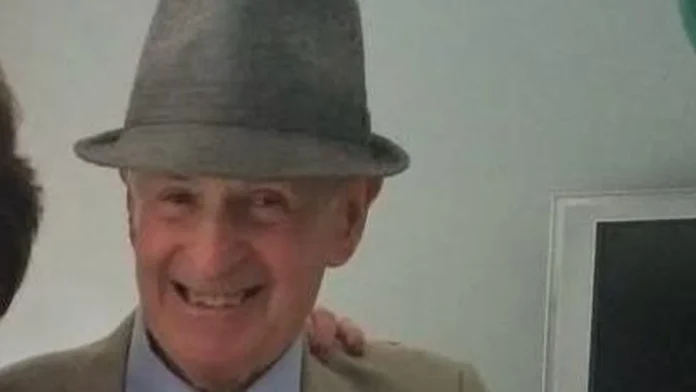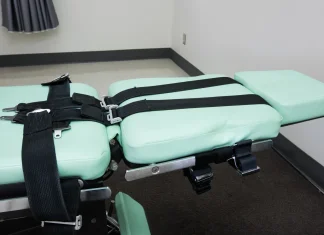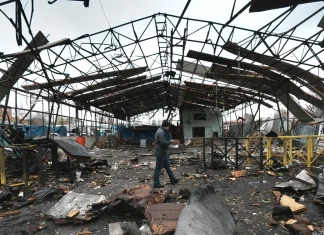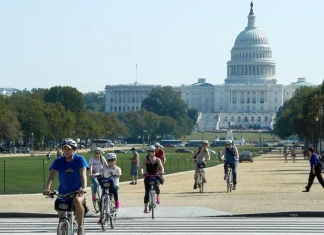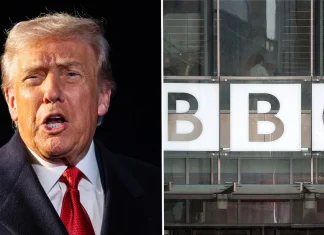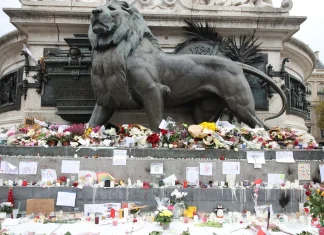Nov 04(Jowhar)- Ra’iisul Wasaaraha Xukuumadda Jamhuuriyadda Federaalka Soomaaliya Mudane Xamsa Cabdi Barre, oo furay Shirka Madasha Hab-maamulka Internet-ka (Somali Internet Governance Forum),
Deadly mountain storms and avalanche kill nine people in Nepal

When the Mountains Turn: Snow, Silence and the Cost of Climbing in Nepal
The Himalayas have a way of making you feel both small and incandescently alive. One minute their ridges are gilded in gold at dawn; the next they rearrange lives with the casual cruelty of weather. Over the past few days that ancient, indifferent grandeur has swallowed nine people — climbers from Italy, France, Germany and Nepali guides — in two separate tragedies that have left communities from Kathmandu to remote mountain villages reeling.
It began with a storm that seemed to come out of nowhere, or perhaps out of a season that is itself changing. Cyclone Montha, a low-pressure system that dumped unusual volumes of rain and snow, hammered much of Nepal last week. Trails were cut, trekkers stranded, and on the slopes the consequences proved fatal.
Yalung Ri: A base camp buried
At the base camp of Yalung Ri — a 5,630-metre peak that stands near the high border with Tibet — an avalanche detached and thundered down the slope into a group of 12 people, officials say. Seven were killed: three Italians, two Nepali climbers, a German and a French national. “I have seen all seven bodies,” said Phurba Tenjing Sherpa of Dreamers Destination, the company that organised the expedition for part of the group. His voice, cracked and raw with exhaustion, carried the factual bluntness of a man who has spent his life in the company of mountains.
Rescuers managed to save the rest. Two French climbers and two Nepali companions were flown to Kathmandu for urgent care, arriving at Era Hospital as daylight took on a brittle clarity after the storm. “We owe our lives to the pilots,” one survivor said later — a simple sentence that felt enormous.
Panbari: Lost on Camp 1
Earlier, in western Nepal, two Italian mountaineers — named by Italy’s foreign ministry as Alessandro Caputo and Stefano Farronato — were confirmed dead after being cut off by heavy snowfall while at Camp 1 of Panbari, a 6,887-metre peak. Local authorities reported that the pair had been out of contact since Friday; the confirmation arrived the following morning. “Their deaths were confirmed this morning by local authorities,” the ministry said in a brief statement. They had been caught in relentless snowfall at roughly 5,000 metres above sea level.
Numbers That Don’t Capture the Pain
Statistics attempt to translate tragedy into context, but they can feel sterile next to grieving families. Still, the record matters. The Himalayan Database — a long-standing archive of climbers and expeditions — notes that since 1950 at least 1,093 people have died on Himalayan peaks. Avalanches account for almost a third of those fatalities, a grim reminder that falling ice and snow remain the mountain’s most indiscriminate killers.
Put another way, roughly 350 lives have been lost to avalanches in seven decades of Himalayan climbing. Each number hides a story: novice trekkers who underestimated the season, seasoned alpinists who trusted a forecast, Sherpa guides who shouldered disproportionate risk to ferry ropes and oxygen canisters for clients.
Voices from the ridge — what people are saying
“We come for the mountain, not to fight it,” said Lobsang Gurung, a retiree from Solu who now ferries supplies to climbing teams. “When the weather is angry, there is nothing to do but wait and pray.”
Dr. Mira Acharya, a Kathmandu-based meteorologist, pointed to shifting patterns. “We are seeing storms in windows that climbers considered predictable,” she explained. “Warmer air can carry more moisture; when that moisture hits high, cold air, it falls as snow — and sometimes in one heavy burst rather than in steady accumulation. It complicates forecasting and raises avalanches risk.”
On the ground, rescue teams and hospital staff speak in tones that mix fatigue with resolute duty. “Helicopters are real heroes, but they can’t fly in every condition,” said Senior Police Officer Gyan Kumar Mahato of Dolakha district. “When the storm shuts down everything, the only options are patience, prayer and hard, slow digging.”
Local Color: The Lives Behind the Lifts
To understand the Himalayas is to understand a landscape threaded with prayer flags, tea houses with steaming masala and yak caravans that move like slow, stubborn weather. Villages cluster in highland shadows, each household linked in some way to trekking seasons. For some, guiding and portering are livelihoods; for others, the presence of foreign climbers has become an economic lifeline.
“My niece saved for her wedding with money from guides,” a woman from Dolakha, Sunita Tamang, told me over a steaming cup of butter tea. “If the season is gone, how will they marry? The mountains give and the mountains take.”
That double-edged relationship — a source of pride, identity and income — makes tragedies like these resonate beyond the immediate families. Guesthouses are quieter, yak drivers worry about loads, and the Sherpa community counts not only the dead but the costs to mental health and long-term security.
What This Means for Adventure and Policy
These deaths arrive at a fraught intersection: climate change, growing adventure tourism, and limited rescue capacity. Autumn, the season when many of these climbs were attempted, is the second busiest time for expeditions in Nepal. The days are shorter and colder than spring, but the skies can be clearer — until they aren’t. As extremes become more erratic, climbers and operators must adapt.
- Emergency logistics remain a challenge: helicopters, high-altitude medevacs and trained mountain rescuers are finite resources.
- Climate scientists warn that shifting weather windows increase unpredictability, complicating climb planning and risk assessments.
- The human cost is disproportionate for local guides: Nepali climbers and Sherpas continue to face the greatest exposure to hazards while often seeing the smallest share of gains.
“This is not just a mountaineering problem,” said Dr. Arun Singh, an expert in mountain livelihoods. “It’s about how communities that depend on risky tourism can be protected. Insurance, better weather infrastructure, stricter permitting during off-windows — there are policy levers, but they require political will and international cooperation.”
What Should We Take Away?
When I stood below a ridge yesterday, the prayer flags snapped in a cold wind that smelled faintly of wood smoke and earth. The mountains were indifferent, but the people who live in their shadow are not. They grieve, they ration hope, they pull survivors from the snow and wrap them in warm blankets.
So what do we ask of those who continue to go? Are we entitled to test ourselves against such raw nature when local communities shoulder so much of the risk? How do we balance human aspiration with the responsibility to protect the people whose lives intertwine with these peaks?
Climbing will always be a negotiation with danger. But as weather grows less predictable and global attention on the Himalayas intensifies, perhaps the conversation can shift: toward safer practices, fairer compensation for Nepali workers, and better early-warning systems that might save lives. If the mountains teach anything, it is humility. We ignore that lesson at our peril.
For now, helicopters rise and fall against the serrated skyline, stretchered forms move through hospital corridors, and families begin the long, private work of grieving. The counts will be updated, investigations opened, and mountaineering forums will buzz with analysis. But under it all, in the villages and tea houses and base camps, lives have been altered in ways numbers cannot fully capture.
What would you do if the mountain you loved asked too high a price?
Trump vows to slash New York City funding if Mamdani wins
The City on Edge: A Mayor’s Race, a President’s Warning, and a Moment that Feels Bigger Than New York
Walk the avenues of New York City these days and you can feel the election the way you feel the subway rumble beneath your feet: a low, constant vibration that makes even the unlikeliest things — a deli owner pausing mid-slice, a schoolteacher lingering outside a classroom — sound charged. Tomorrow the city will choose a mayor, and more than municipal policy is at stake. The campaign has become a vortex where local concerns—rent, transit, public safety—meet national theater: former President Donald Trump, using his Truth Social megaphone, has threatened to cut federal funding if progressive Democrat Zohran Mamdani wins.
“It would be a complete and total economic and social disaster should Mamdani win,” Trump posted, a declaration that landed like a thunderclap across Queens stoops and Manhattan townhouses alike. He warned that federal support would be “highly unlikely” beyond the legal minimum, and urged voters to rally behind Andrew Cuomo — the former governor who, after losing to Mamdani in the Democratic primary, is now charging forward as an independent.
For a city that craves stability but thrives on reinvention, that threat has the air of a pressure test. What happens when federal patronage — money for housing, transit, security — becomes a bargaining chip in a fight about ideology and experience?
On the Ground: Voices from Bodegas to Borough Halls
“You don’t play with my rent money,” says Rosa Martinez, who has run a small bodega in Jackson Heights for 23 years, wiping her palms on an apron inked with last month’s receipts. “We need someone who can keep the lights on in the neighborhood. This talk of withholding funds scares people who don’t even follow politics.”
Across town, a 54-year-old MTA bus driver, Luis Hernandez, shrugs and says: “Fare-free buses sound nice — depends how you pay for them. I just want buses that arrive on time.”
These voices matter because they translate abstract threats into tangible fears: will shelters have beds? Will the city get disaster aid after a storm? Will school buildings be fixed? Federal funding touches everything from lead paint abatement to summer youth programs, and when the specter of withdrawal looms, even the most routine services begin to feel precarious.
Policy on Paper — and the Questions It Raises
Zohran Mamdani, 34, has captured attention with a bold, progressive platform. He proposes taxing the city’s wealthiest, raising the corporate tax rate, freezing rent increases for rent-stabilized units, expanding publicly subsidized housing, and piloting fare-free buses across the city.
“Mamdani represents a new generation of leaders who see the cracks in our system and want to seal them,” said Dr. Laila Rahman, an urban policy researcher at a Brooklyn think tank. “But every progressive policy requires a financing plan. The conversation about funding is crucial.”
Not everyone is convinced. “Experience matters,” one longtime public school principal told me over coffee in a cafeteria near City Hall. “The ideas are exciting, but you have to be able to steer the ship when there’s a storm.” That line of thinking helps explain why Andrew Cuomo — who served as governor of New York State — is now being framed by some voters as the safe, experienced alternative, despite the controversies that dogged his tenure.
The Nationalizing of a Local Race
Presidential involvement in city elections is not new, but the tenor is striking. Trump’s blunt warning turns a municipal contest into a referendum on federal access and partisan loyalty. It forces voters to consider whether municipal governance should be treated as a partisan risk assessment: electing a mayor the White House disfavors could, the implication goes, mean real financial consequences.
“This is about power, not policy,” says Marcus Ellison, a veteran political strategist who has worked campaigns across the country. “When national actors try to influence local outcomes by dangling or threatening funds, it changes how municipal leaders must approach governance. They have to be able to negotiate with four different layers of government and survive political crosswinds.”
For many New Yorkers, the national spotlight is both flattering and exhausting. The city is a global brand — a center of finance, culture, and ideas — but it is also a place where people live paycheck to paycheck, where a rent increase can mean the difference between staying and moving out of the only home you’ve known.
When Obama Calls
Adding another layer to these dynamics, former President Barack Obama reportedly called Mamdani this weekend to offer his support and to be a “sounding board” should Mamdani win. The conversation — confirmed by Mamdani’s campaign — was short but symbolic.
“It felt like getting a nod from someone who knows what the job’s pressures are,” Mamdani said in a campaign statement. “President Obama and I spoke about bringing new kinds of politics to this city.”
That outreach highlights a broader pattern: established national Democrats are trying to shepherd the party into a post-2016, post-pandemic era where progressive energy must be squared with electability concerns. The question for voters is stark: do they want sweeping transformation in city policy now, or a more cautious course that prioritizes short-term stability?
Big Ideas, Bigger Stakes
New York’s challenges are not unique. Cities around the world wrestle with income inequality, unaffordable housing, aging infrastructure, and a public trust chafed by perceived corruption or incompetence. The outcome of this race could serve as a test case for how progressive municipal governance can be funded, implemented, and defended in an era of polarized national politics.
- Population scale: New York is home to roughly 8.5 million people — a scale that magnifies policy impacts.
- Housing crunch: Tens of thousands of households face severe housing cost burdens every year, pushing debates about rent policy and subsidized housing to the forefront.
- Transit and mobility: Public transit is the city’s circulatory system; proposals like fare-free buses are as transformative as they are logistically complex.
How the city negotiates its future will inform similar debates internationally — from London to São Paulo — about how to marry robust social programs with fiscal responsibility.
So What Will You Do?
If you’re reading this from within the five boroughs, tomorrow’s choice is yours to make — as it is for the millions of voices that collectively breathe life into the metropolis. If you’re elsewhere, consider this: what does it mean when a national leader suggests withholding the lifeblood a city needs? How should local democracy respond when funding becomes political leverage?
“Voting is about the kind of city we want to live in,” said Aisha Clarke, a community organizer in the Bronx, as she taped campaign flyers onto a lamppost. “It’s about whether we’re willing to bet on change or cling to what’s familiar because it feels safer.”
Tomorrow, New Yorkers will choose. And when the ballots are counted, the ripple effects will travel far beyond municipal boundaries — not only shaping how a city is run, but also how democracy itself functions under pressure from both local urgency and national politics.
Worker Killed as Historic Medieval Tower Partially Collapses in Rome
Dust over the Forum: a medieval tower collapses, a worker dies, and Rome holds its breath
The sky above the Fori Imperiali—usually clear enough to read the stones’ weathered faces—turned the color of chalk the day the Torre dei Conti came down. A white plume rose like a ghost from the windows of the 13th-century tower, drifting across a broad avenue where tourists and Romans often wander shoulder to shoulder. What looked at first like a cloud of ordinary construction dust became the scene of a human tragedy.
Emergency crews pulled a worker from beneath falling masonry late in the afternoon. He was rushed to hospital in critical condition and, according to local media reports and city officials, did not survive. Another man, pulled free almost immediately, was taken to hospital with serious head injuries. Two other workers suffered minor wounds and refused treatment on site. No firefighters were hurt.
What unfolded: a timeline of the collapse
The day’s events were unnervingly precise.
- Around 11:30am local time, part of the Torre dei Conti—29 metres tall and perched along the Via dei Fori Imperiali—first shed masonry to the street below.
- Roughly 90 minutes later, while firefighters were operating aerial ladders at the scene, a second collapse occurred. Clouds of dust poured from the tower’s upper windows, and video shared widely on social media captured falling stone and the abrupt scramble of crews and onlookers.
- Rescue teams worked for hours. One worker was trapped under rubble and later recovered, but in grave condition; another was removed quickly with serious head trauma. The construction site has been seized as authorities opened an investigation into the causes, Italian daily Corriere della Sera reported.
Voices from the street
“It sounded like a thunderclap. Then the dust—everything was just white,” said Maria Rossi, who runs a small café near Piazza Venezia and watched the scene unfold from behind her counter. “I told my customers to get down. We all thought it was another earthquake at first.”
“We rescued a man late yesterday and he was in very serious condition,” Rome police chief Lamberto Giannini told reporters, his voice steady, the weight of the rescue evident in his face. “The construction site has been secured. We must find out what happened.”
Rome’s mayor, Roberto Gualtieri, visited the scene and spoke briefly with emergency crews and journalists. “This is a deep wound in the heart of the city,” he said. “Our priority is to support the families and ensure a thorough investigation. We also owe it to Rome’s heritage to understand whether more lives could have been protected.”
A tower with a thousand years of stories
The Torre dei Conti is more than a pile of stones; it is a living fragment of Rome’s layered history. Built in the early 13th century by relatives of Pope Innocent III, it once rose higher than it does today—reduced over centuries after earthquakes in the 14th and 17th centuries and adapted for new uses. For a time it housed municipal offices, and in recent decades it stood silent, an austere sentinel beside the traffic and tourists of modern Rome.
It was scheduled to be reborn: a four-year restoration project, partly funded by the European Union, was converting the tower into a museum and conference space. The work was intended to finish next year and, because of the EU-funded program, the area immediately around the works had been closed to pedestrians.
“Restoring these monuments is never only about aesthetics,” said Dr. Elena Marchetti, an archaeologist who has worked on conservation projects around Rome. “The tower is a palimpsest—every change a layer of history. But that very complexity makes interventions delicate. You’re doing surgery on an organism that’s been living for eight hundred years.”
The wider stakes: heritage preservation, safety, and funding
What happened at the Torre dei Conti is not simply a local tragedy; it raises wider questions that cities across the globe wrestle with. How do we preserve fragile, centuries-old structures while keeping workers and the public safe? Who bears responsibility when restoration becomes risky—contractors, municipal authorities, or funders?
“Conservation is under-resourced across Europe,” noted Paolo Benetti, a structural engineer who consults on historic buildings. “Historic masonry behaves in unpredictable ways, especially after centuries of earthquakes, pollution and vibration from traffic. Add the pressure of fixed schedules and budgets, and corners can be cut—sometimes with fatal consequences.”
Italy, with its dense concentration of historic sites—its city center inscribed as a UNESCO World Heritage Site since 1980—faces this balancing act constantly. The country’s monuments draw millions of visitors annually and are central to local economies, yet they also require sustained investment: careful scaffolding, slow-moving conservation techniques, monitoring systems that detect shifts in stone and mortar.
Questions that linger
Officials have seized the construction site as they investigate. Authorities will want to know whether the collapse was caused by structural weakness, human error, a lapse in safety protocols, or some combination thereof. They will examine contracts, the sequence of work, and adherence to regulations.
“We need a full inquiry,” said a city official involved in overseeing cultural projects. “If there were failings, they must be identified and corrected so no family suffers like this again.”
Will this tragedy change how Rome approaches restoration projects? It must, many experts say. More frequent structural monitoring, clearer safety protocols for workers, and a willingness to slow down projects when risk is detected are among the measures being discussed. There is also talk of better transparency about restoration work in historically sensitive areas.
In the shadow of the Colosseum
Standing midway along the Via dei Fori Imperiali, the Torre dei Conti has always been in the shadow of the Colosseum’s colossal silhouette. The two are part of the same urban tapestry—ruins braided with modern life: scooters weaving a careful path between museum buses, vendors selling gelato, tourists photographing every column.
“You see these stones and you think they’ll last forever,” Maria the café owner said, stirring sugar into a cup and looking down the avenue at the tower. “But they are old. They need care. And men and women who work on them need to come home at night.”
As an investigation unfolds, Rome will have to reckon with grief, with accountability, and with how it chooses to steward its past. It will be a test of municipal will and of the systems that fund and manage cultural heritage across Europe.
What can we learn—and what will we do?
When you visit a historic center, do you think about the people who keep it standing? Would you expect the same safety standards for a restoration in a small village as in a capital city? This event asks us all to consider the invisible labor behind our monuments—and how society values that labor.
At the base of the tower, police tape flutters in the Roman breeze. Workers gather in small clusters, some shaking their heads, others talking in low voices about what went wrong. Above them the stones keep their silence.
Rome has lost a worker; a family mourns. The city will seek answers, and the world will watch one of its oldest urban centers grapple with the cost of preserving a past that, when it crumbles, can crush the present.
Trump oo ku hanjabay inuu dhaqaalaha ka jaran doono New York, hadii la doorto Zohran Mamdani
Nov 04(Jowhar)-Madaxweynaha dalka Maraykanka Donald Trump ayaa ka soo hor jeestay in Zohran Mamdani oo Muslim ah loo doorto jagada maayirka magaalada Qaramada Midoobay Xaruunta u ah ee New York.
Israel Verifies Returned Remains Are Those of Hostages
The Quiet That Isn’t
There was a quiet in the morning that sounded louder than any explosion — the hush that follows a delivery no family ever wants to receive. Outside a modest apartment in central Israel, neighbors gathered like reluctant witnesses as soldiers came and went with a small box in tow. Inside, a mother clutched a faded photograph and tried to steady her breath. “We were told they were coming back,” she whispered. “But not like this.”
Israeli authorities have confirmed that three sets of remains handed over through the Red Cross belong to hostages seized during the 7 October attack last year: Captain Omer Neutra, 21; Corporal Oz Daniel, 19; and Colonel Assaf Hamami, 40 — the highest-ranking officer among those killed. Officials say the handover was carried out as part of a fragile ceasefire arrangement mediated by international actors and facilitated by humanitarian organizations.
From Tunnels to Tables: The Mechanics of a Troubled Truce
The remains were delivered to Israeli representatives yesterday, after Hamas’s armed wing said they had been found “along the route of one of the tunnels in the southern Gaza Strip.” The International Committee of the Red Cross oversaw the transfer — a somber choreography of flags, paperwork, and grief.
“We completed standard identification procedures and informed the families,” an Israeli military spokesperson told reporters. “This is a painful but necessary step toward closure for these households.”
For families, confirmation brings no neat end. “I have his uniform folded on my bed,” said Miriam Levi, a neighbor of one of the soldiers, wiping her face with the back of her hand. “We dress him each morning in our minds. Now we will have to change that ritual.”
How the exchange unfolded
When the truce took effect on 10 October, it briefly transformed the landscape: troops pulled back from some urban positions, aid convoys entered more readily, and hundreds of thousands of displaced Palestinians cautiously returned to view the skeletons of homes left behind. In exchange for 20 living hostages released by Hamas, Israel freed nearly 2,000 Palestinian prisoners and wartime detainees — a swap that acknowledged, but did not erase, the cost of the conflict.
Violence in the Interstices
Still, this is not a peace. The ceasefire has been punctured by lethal incidents on both sides. Hamas-run health authorities in Gaza say three Palestinians were killed by Israeli fire near Rafah — an area that remains under varying degrees of Israeli control — after soldiers identified people crossing a yellow line demarcating occupied zones.
“They were advancing toward troops and posed an immediate threat,” an Israeli military statement said, explaining the strike. Medics on the ground reported that one of the dead was a woman; names of the others have not been released.
Gaza’s health ministry reports that since the truce came into effect, at least 239 Palestinians have been killed by strikes, nearly half of them during a single day of intense retaliation last week. Israel, for its part, says three soldiers have been killed in the same period and that numerous fighters have been targeted. Such numbers — whether issued by one side or another — are a shorthand for a hardship that statistics alone cannot capture.
Bodies, Bargains, and the Burden of Ruins
One of the most wrenching elements of the deal has been the exchange of remains. Hamas has said it is trying to recover bodies from under mountains of rubble — a slow, dangerous process that requires heavy machinery and trained personnel. “Many of the deceased are buried beneath collapsed buildings,” a Hamas official told a visiting mediator. “We need equipment and access to do this properly.”
Israel has accused Hamas of delay; Hamas counters that the retrieval is complicated and hazardous. So far, of 28 deceased captives that Hamas says it has in its custody, it has returned 20 — including 18 Israelis, one Thai national, and one Nepali — according to statements by Israeli officials. Gaza’s health ministry, meanwhile, said it received 45 bodies of Palestinians whose remains had been held by Israel, bringing the total number of Palestinian bodies returned to Gaza to 270.
What this means for families
“Closure is not only about the coffin,” said Dr. Hila Ben-David, a psychologist who has worked with bereaved families. “It’s about the right to mourn, to perform rituals, to tell stories. When that process is interrupted, trauma becomes permanent.”
Families on both sides described an agonizing mix of relief and renewed pain. “We’re grateful to get him back,” one father said, holding a worn prayer book. “But does that fill the silence at the table?”
Gaza’s Wounded Mind
Beyond deaths and returns lies another crisis: the long, diffuse wreckage of mental health. Gaza’s population of roughly 2.3 million — already living under years of blockade and repeated conflict — is now coping with what local specialists describe as “a volcano” of psychological distress.
Abdallah al-Jamal, the head of the Gaza City Mental Health Hospital, said his team has been overwhelmed since the truce: “When the fighting eased, it was as if everyone who had been holding back their pain finally came in. The stigma about seeking help has faded because the need is so large.”
The hospital itself is damaged; staff work out of makeshift clinics and share rooms, stripping consultations of privacy. More than 100 patients are seen daily under these conditions, with children showing classic signs of trauma — night terrors, bed-wetting, an inability to concentrate — and adults reporting insomnia, panic attacks, and hopelessness.
“I don’t recognize my son,” said Amal, a mother of three from central Gaza. “He collects branches for cooking and hides when he hears a car. He used to run in the street. Now he only runs from shadows.”
What are we to do with this sorrow?
As global audiences scroll past headlines, it’s tempting to compress people into numbers: hostages released, prisoners freed, bodies exchanged. But these metrics obscure the lived realities that make up a conflict: the father who will never teach his son to drive; the child who dreams of water and finds only dust; the volunteer who sorts clothing in a tented camp and keeps a list of names to remind herself that each item belongs to a person.
Is there a path forward that honors both accountability and dignity? Can reconstruction coexist with justice? These are not easy questions to answer, but they are necessary. Humanitarian access, forensic teams to recover bodies, sustained mental health funding, and avenues for genuine political dialogue are all parts of a longer, messier solution.
Scenes You Won’t See on the Six O’Clock News
Walk through Rafah or the eastern neighborhoods of Gaza City at dusk and you might see children darting between half-walls to reach a puddle of water. You might smell bread baking on an open fire because there is no electricity for ovens. You will hear someone telling a story about a neighbor who used to play the oud in the evenings, laughter now a fragile thing shared in passing.
“People keep small rituals going — a cup of tea, a radio station, a story about the last harvest,” said Samar Haddad, a community organizer. “They are not surrendering hope; they are making space for it.”
Closing
Grief, exchange, and a still-fragile truce have left families in a peculiar, painful limbo. There is no single narrative that can contain what is happening here. Instead, there are a thousand small stories: a neighbor weeping in a doorway, a soldier’s uniform folded neatly on a bed, a child collecting twigs to boil water. Each one asks us, in its own way, how much attention we are willing to pay, and what we are prepared to do with what we learn.
When the dust settles — when it settles, will it be on rubble or on rebuilt homes? Will the returned bodies become the end of a cycle, or a reminder of unfinished work? Those who live here do not want pity; they want action. They want the tools to find and bury their dead, the support to heal their minds, and the political will to prevent a replay.
What would you want, if it were your family at the center of this story?
Wadamada Carabta oo go’aan adag ka qaatay muranka Itoobiya iyo Masar
Nov 04(Jowhar)-Wadamada Khaliijka Carabta ayaa shaaciyay in Itoobiya aan wax laga weydiineynin Badda Cas, shaqana aysan ku leheyn.
Millions of Americans Returning to the Polls — But Not the Same Way
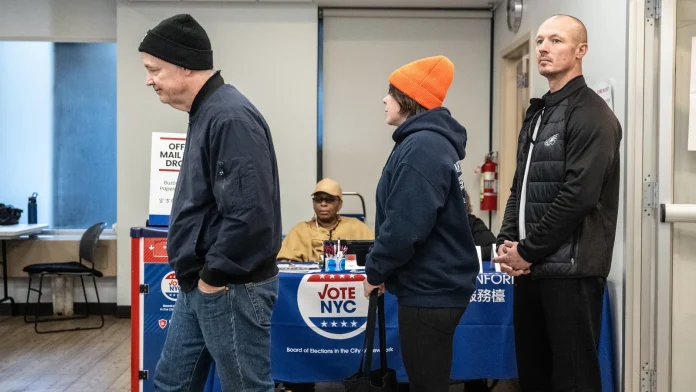
Election Eve in America: Small Ballots, Big Echoes
There’s a peculiar hush that settles over polling places on the night before a big vote—a mix of optimism, dread and the faint smell of coffee cooling in Styrofoam cups. Walk past a community center in suburban New Jersey or a library in Alexandria, Virginia, and you’ll hear the same thing: neighbors swapping predictions, campaign volunteers folding one last stack of leaflets, and the low hum of a nation scrimmaging over meaning in miniature contests.
This is not a presidential year. But make no mistake: tomorrow’s local ballots feel national. Two governorships, hundreds of state legislators, dozens of city offices and a high-stakes California referendum have become a kind of political litmus test for the country—an off-season weather report that could tell us how the American electorate is feeling about the first year of a polarizing White House and the direction of the two major parties.
Why These Local Races Matter
It’s tempting to tune out odd-year elections as small-bore civic duty. Yet these contests sit midway between the last presidential election and next year’s midterms; they are, in many ways, the “midterms of the midterms.” Historically, the party occupying the White House tends to lose ground in interim elections. In modern memory, that drift has been reliable: presidents usually see their party give up seats in the House come midterms, and governors’ races often swing momentum like a tidal current.
But local factors—shutdowns, commuter rage, bread-and-butter inflation—can amplify or blunt national trends. That’s what makes tomorrow’s pairing of New Jersey and Virginia so captivating. They are both wealthy, densely governed states where the national conversation about tariffs, federal funding and the cost of living collapses into immediate household concerns.
Virginia: Federal Paychecks, Suburban Anxiety
Drive the beltways of northern Virginia and you’ll pass guarded compounds—Langley for the CIA, sprawling Pentagon parking lots, the FBI Academy at Quantico—and a thousand home offices once tethered to federal paychecks. “We have family in the service,” says Martha Lopez, a middle-school teacher in Fairfax County. “When paychecks get interrupted, everyone talks politics at the dinner table.”
That reality has given Abigail Spanberger, a former intelligence officer turned congresswoman, a campaigning edge. Her pitch is pragmatic: address affordability, protect jobs, steady the economy. “I’m running to solve the problems people wake up worrying about,” she told a small crowd at an Alexandria community center, voice steady as rain on a roof. “Not to deliver lectures.”
Spanberger’s opponent, Lieutenant Governor Winsome Earle-Sears, presents a contrasting story—an immigrant from Jamaica and a Marine veteran who threads conservative rhetoric with a populist streak. But that has not easily translated into traction in a state that did not vote for Donald Trump in the last presidential cycle. And the partial federal shutdown, with furloughed employees and families tightening belts, has sharpened the political stakes in towns where a paycheck can determine a mortgage payment.
New Jersey: Commuter Fury and the Rail That Never Came
Head north to New Jersey and you feel the pressure of the morning commute in every train station poster. “We’re stuck on a rail promise,” says Marcus Allen, a Newark commuter who spends an hour and a half each way on the PATH into Manhattan. “Pull the funding on our tunnel and you’re messing with 200,000 people’s livelihoods.”
That sense of betrayal—federal funds for a critical trenched tunnel to Manhattan having been threatened—has given Mikie Sherrill, a former Navy pilot and current Democratic congresswoman, a ready issue. Sherrill’s framing is simple: a governor should be an advocate for working people, not a bystander when transportation and energy bills spike. Her campaign zeroes in on surging home energy costs, housing affordability, and the everyday squeeze that voters feel at the pump, in grocery aisles and on their utility bills.
New Jersey is historically blue; registered Democrats outnumber Republicans in many counties. Yet recent polling shows narrower margins than party stalwarts would like—reminding strategists that turnout, not registration alone, wins elections.
New York’s Mayoral Drama: A City in Search of Solutions
If state governors are the commanders-in-chief of local life, mayors are the city’s emergency room physicians—triaging homelessness, housing, policing, and mass transit with limited resources. New York City’s mayoral primary amplified this reality into theater.
Zohran Mamdani, a 34-year-old state legislator and self-described democratic socialist, managed to capitalize on the anxieties of younger residents crushed by rent and the promise of a city where wealth and want coexist cheek by jowl. “We want action, not platitudes,” said Amina Yusuf, a barista in Brooklyn, describing the mood of many of her peers. Mamdani’s platform—aggressive rent control, expanded public housing, free citywide transit funded by higher taxes on the wealthy—resonates with those who see the city’s future slipping from reach.
That kind of politics unnerves some moderates and provokes fierce national debate. Critics paint Mamdani as impractical; admirers call him the voice of a generation priced out of the American dream. Even the mayoral race’s ripple beyond Gotham has fed a familiar question: can progressive city-level victories be translated into state or national strategy?
Gerrymandering and the California Referendum
Meanwhile, on the opposite coast, California voters are being asked to reimagine how district lines are drawn. Proposition 50 (as it is commonly discussed) would recalibrate redistricting rules—effectively reshaping how the Golden State’s 52 congressional seats might be apportioned. For Republicans, the measure portends fewer footholds in a state where they already lag in voter share. For Democrats, it’s a defensive maneuver aimed at preserving a fragile advantage ahead of national midterms.
“This isn’t just a local power play,” says Dr. Helena Park, a political scientist who studies electoral systems. “Redistricting in a giant state like California moves the chess pieces in Washington.”
Primaries, Polarization, and the Party Identity Question
One lesson emerging from these races is painfully familiar: primary elections often reward the most motivated—usually the most ideologically intense—voters. That dynamic has pushed both parties to grapple with identity. Do Democrats lean hard into progressive reform in cities and let moderates anchor suburban battlegrounds? Do Republicans coalesce around a national personality, or preserve space for local pragmatists?
“The party that wins primaries can lose general elections if it doesn’t reflect the median voter,” says veteran strategist Thomas Rivera. “Conversely, too many compromises can hollow out a party’s soul.”
What to Watch, and What to Take Away
Tomorrow will not decide the presidency. It will not, by itself, redraw the national map. But it will do something politicians prize: provide a snapshot. It will reveal whether voters are punishing a party in power for national chaos, rewarding local leaders who promise practical fixes, or leaning into bold experiments that only cities can carry.
So, what do you think? Are these mid-sized contests merely footnotes, or are they the first sentences of a new political chapter? Will centrists reassert control in suburbs and state capitals while radicals reshape metropolitan politics? Or will the American electorate keep confounding neat categories altogether?
Tomorrow’s returns will offer answers—and questions. Listen closely. The small stories on the ballot often have the loudest echoes.
Russian forces push toward critical Ukrainian logistics hub
On the Edge of Pokrovsk: A Town That Could Tip the Balance
There is a particular kind of silence that comes before a shelling—thin, brittle, as if the air itself is holding its breath. In the ruined outskirts of Pokrovsk, that silence is threaded with the distant thump of artillery and the occasional rattle of small arms. The city, a transport and logistics hub in the Donetsk region, has become the latest focal point in a grinding, year-and-a-half-long push that could reshape the eastern front.
Ukrainian officials describe the situation as acute: they say Russian forces are applying severe pressure around Pokrovsk and that several hundred enemy troops—Ukrainian estimates put the number as high as 300—are operating in and around the city. Moscow, for its part, has claimed advances near the railway station and industrial zone, asserting that its units have dug in on the city’s outskirts. Independent verification from the ground is difficult; these are front-line realities shared through briefings, social media updates, and the slow trickle of eyewitness accounts.
Why Pokrovsk matters
At first glance, Pokrovsk is unremarkable: a mid-sized city built along railway lines, surrounded by fields and the low-lying remnants of heavy industry. Before the war, roughly 60,000 people called it home. Today, most have long since fled. To military planners, however, Pokrovsk is a node on a map. Capturing it would give Russian forces a stepping-stone toward Kramatorsk and Sloviansk—the two largest Ukrainian-held cities left in Donetsk—and could alter logistics and lines of advance in ways that matter far beyond this single pocket of rubble.
“If they take Pokrovsk, the dynamics of the region change,” said Marcin Kaczmarek, a security analyst who has been tracking the Donetsk front. “It’s not just territory. It’s access, supply routes, and the morale narrative. For Kyiv, holding it is both strategic and symbolic.”
The fighting on the ground
Both sides paint different portraits of control. Russian statements say their troops have entered the Prigorodny area and are destroying what they call surrounded Ukrainian formations. Ukrainian commanders counter that any Russian presence is limited and fragmented, carried out in small raiding groups—often five fighters at a time—rather than in large armored thrusts. Ukrainian units, including elements of the 7th Rapid Response Corps, say they have denied attempts to sever supply lines north from Rodynske, keeping crucial lifelines open.
“They come in waves—little knots of men rather than an armored tide,” said a Ukrainian commander who asked not to be named for operational security reasons. “That changes how you fight. You can’t meet a hundred with one strategy; you have to respond constantly, locally.”
That localized back-and-forth is expensive. Since the brutal fall of Avdiivka last year, Russian forces have made steady but slow gains along a roughly 1,000-kilometre front. Kyiv reports recently reclaiming or securing hundreds of square kilometres—188 sq km taken from Russian-held positions plus another 250 sq km that were unheld by either side at the time of capture. Yet every advance is measured in blood, munitions, and the slow grinding of urban destruction.
Scenes from the region
On the roads leading to Pokrovsk, the landscape is a collage of war: burnt-out cars, collapsed façades of Soviet-era apartment blocks, and the odd banner flapping on a lamppost. In Kostiantynivka, a small town to the north, a car that survived for years was finally silenced by a November strike—its scorched shell a stark punctuation mark on a main street that once hummed with markets and children.
“We used to pick cherries under that tree,” said Olena, a retired teacher from a village outside Pokrovsk, her voice catching. “Now the cherries grow on ruins. People remember normal life in shards.”
Miners’ hats and the memory of coal pits still name-check the region’s past. Cafés, where they exist, sell strong coffee and dumplings to those who remain; radios tuned to hurried military updates provide the afternoon background. The human routines of small towns—tea, gossip, a neighbour helping another board a window—persist stubbornly, even as the front breathes in and out nearby.
Wider ripples and the international angle
The battle for Pokrovsk is not just a local contest; it feeds into broader geopolitical currents. Kyiv warns that a Russian success here would be the most significant territorial gain for Moscow since Avdiivka—a city that fell after some of the war’s fiercest clashes. Moscow insists it continues to make meaningful advances. Meanwhile, diplomatic avenues remain cold: face-to-face peace talks have not resumed since July, despite public calls from international leaders encouraging a halt to violence.
“Wars are not only fought on the ground; they are also fought in the stories leaders tell,” said Dr. Amina Naidu, a conflict-resolution scholar. “When towns like Pokrovsk become symbols, stopping the narrative becomes as strategic as holding the rail yard.”
At the same time, strikes reported by the Russian Defence Ministry extended beyond Pokrovsk’s immediate environs—airfields, weapons repair bases, and gas infrastructure in the region were, according to Moscow, targeted to degrade Ukraine’s operational capacity. Kyiv, meanwhile, has reported halting attempts to seize Kupiansk and slowing Russian advances in several sectors, underscoring how sieges and counterattacks ripple across the wider tapestry of the conflict.
What this means for civilians
Pokrovsk’s dramatic population drop—most of its roughly 60,000 pre-war residents are gone—illustrates the human toll. Displacement reshapes communities and economies. Young people leave, older people stay. Schools become shelters. Churches become distribution centres.
“We carry what we can in two bags and a memory,” said Ihor, a volunteer from a nearby town who helps move families southward. “It’s not just furniture. It’s birth certificates, a photograph, the smell of borscht in the winter. Those are the things that teach you what you’ve lost.”
The international community watches, sometimes with muted statements, sometimes with military aid that changes the tactical calculus on the ground. But for the people living in trembling suburbs and emptied high-rises, aid and headlines are secondary to the pragmatic question of tonight’s safety.
After the dust settles—questions, not answers
What will happen if Pokrovsk falls? Will the capture open a meaningful corridor toward Kramatorsk and Sloviansk, or will it be another incremental, costly gain in a war of attrition? Can the international diplomatic freeze be thawed in time to prevent further urban tragedies? These are not questions with neat answers, but they are the ones local families ask as they count their water and ration their heat.
History shows that cities, even broken ones, can become symbols of resistance or trophies of conquest. Here, on the ash-scented streets of Pokrovsk, residents and soldiers alike watch and wait. They trade rumors and rations, heroism and heartbreak, in the shadow of engines and the song of distant guns. The world watches too—through briefings, through grainy footage, through the work of aid groups trying to keep living spaces habitable.
Will Pokrovsk become another forgotten ruin, or the hinge on which a new phase of the conflict swings? The answer will be decided not by statements from distant capitals but by the small, dangerous choices made on the ground—by soldiers, volunteers, and civilians who refuse to let their lives be reduced to coordinates on a map.
Accused killer of Irish man sparks disruption at court hearing
An Ordinary Errand, A Shocking Silence: The Death of John Mackey and a London Courtroom Interrupted
On a mild May morning in a north London neighborhood, an 87‑year‑old man walked to the Co‑op with a familiar, small list: cornflakes, cottage pie, a newspaper. He stopped for a kebab on the way home. Two days later he was dead. The man at the center of the unfolding legal drama, 59‑year‑old Peter Augustine, sat in the dock at the Old Bailey this week — and on at least two occasions disrupted the court, insisting aloud that he did not strike the pensioner.
The scene inside the courtroom was raw and human. Augustine, who denies charges of murder and robbery, startled proceedings by shouting from the dock: “I never hit him. I took the bag and I ran.” He left the court voluntarily and then reappeared, interrupting the prosecution’s opening statement a second time. Judge Sarah Whitehouse, presiding with a steadiness that comes from years on the bench, told him to leave.
Outside the legal technicalities, this is a story of a single, ordinary life being cut short, and of the ripple effects that flow into a family, a community, and a city. The victim was John Mackey, originally from Callan in County Kilkenny, remembered by relatives as a “true gentleman” — a phrase that seemed to hang in the air as a family member dabbed at the corner of an eye when details of his injuries were recounted in court.
The day that changed everything
According to the prosecution’s account, on 6 May Mr Mackey left his home for a short trip that most of us could imagine taking without a second thought. He never made it back. Witnesses described seeing a very aggressive assault: one person said they saw an attacker “stomping and kicking” at the vulnerable man; another said they saw him being punched. Dr Rebecca O’Connell told the court she heard someone shouting “give me the bag”.
Police found the contents of Mr Mackey’s bag at Augustine’s accommodation when they arrested him. Among the recovered items was the cottage pie — allegedly eaten. A pathologist concluded that Mr Mackey died from blunt force injuries to his head and chest two days after the attack.
Voices from the street and the court
Outside the Old Bailey, Londoners exchanged their own short takes — a neighbor who’d seen Mr Mackey at the shop said, “He always shuffled along slowly, smiling. You wouldn’t expect anyone to hurt him.” A local shopkeeper, who asked not to be named, murmured, “We talk about safety, but when it happens it feels surreal — like it belonged to someone else.”
Legal observers in the public gallery spoke of the tension between a defendant’s outcry and the measured cadence of the court. “It’s not unusual for emotions to spill over,” said an experienced criminal barrister waiting for the session to resume. “But the court must weigh evidence, not theatrics.” Augustine, the barrister added, told police in earlier proceedings that he had confessed, reportedly saying, “I don’t want bail … because I know what I did. I don’t want bail, I’m guilty.” Whether that statement will be explored in full remains to be seen.
What does this tell us about the city we live in?
When a quotidian errand results in tragedy, it forces a city to look in the mirror. London, like many global cities, wrestles with questions about street safety, care for older residents, and the strains of social isolation. Official statistics provide a backdrop: in recent years, England and Wales have seen hundreds of homicides annually, with London accounting for a disproportionate share of knife‑enabled and violent incidents in some periods. But beyond numbers, the case raises human questions: Are older people being left physically exposed by cuts to community services? Are they more vulnerable because they move more slowly, or because social networks have eroded?
“We live in a society where older people can be invisible,” said Dr Aisha Rahman, a sociologist specializing in urban ageing. “This invisibility becomes literal when services withdraw and neighborhoods lose their informal guardianship — the neighbour who knows your routine, the shopkeeper who spots a change.”
Small acts, large consequences
In court, Augustine painted a different picture: he says he only “tapped him lightly on his leg,” said “alright guv,” and walked off, thinking the man was drunk. The prosecution outlined witness testimony that suggested something far more violent. This is where juries will decide, weighing conflicting narratives. Yet the story resonates because it shows how a brief, violent encounter can irrevocably alter a life and a family.
Inside the Old Bailey, members of Mr Mackey’s family sat quietly as the injuries were described. Sobs were stifled. A niece later told reporters, “He loved his routine — simple things. The world feels emptier without him.” The grief is granular: the missing shopping trips, the empty chair at the breakfast table, the newspaper unread.
Broader reverberations: justice, prevention, compassion
As the trial continues — scheduled to last at least two weeks — it will reawaken debates about punishment, rehabilitation, and prevention. What measures can a city take to make sure elderly residents are not preyed upon? How do police, social services, and local communities collaborate to protect the most vulnerable?
Policy experts point to a mix of responses: improved street lighting and CCTV in certain hotspots, investment in community outreach and welfare checks, and better training for shop workers and emergency responders to spot elder abuse. But those are system‑level answers. On the human level, the loss of Mr Mackey reminds us of the fragile threads that bind urban life together.
“When you see an older person walking, offer a smile, a hand if they need it,” suggested Maria Flynn, who runs a local befriending charity in north London. “It’s not about moving mountains; it’s about restoring attention.”
Questions to sit with
What did you notice on your last walk through the neighborhood? When was the last time you checked in on an elderly neighbor or relative? How does a city balance freedom and safety without turning public spaces into fortresses?
These aren’t easy questions. They are, however, urgent. A life as ordinary as buying cornflakes should not be an occasion for fear. As the Old Bailey proceedings unfold, and as Londoners — and readers around the world — listen in, this case asks us to measure the cost of our shared neglect and to imagine practical acts of care that might prevent another ordinary morning from becoming another family’s heartbreak.
The trial of Peter Augustine will resume at the Old Bailey. For now, the portrait of John Mackey that emerges is modest and honest: a man who liked simple routines, who came from County Kilkenny, and who, in a city of millions, was known and loved. How we respond to that knowledge will say as much about us as the court’s eventual verdict will about him.


